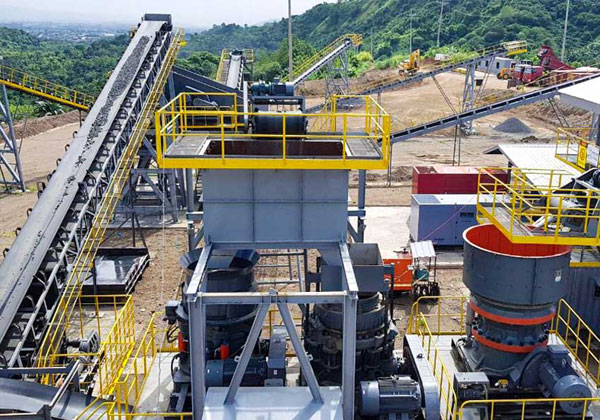A metal ore crushing production line is designed to process large quantities of ore into smaller, usable materials for further processing or direct use in various industries. These lines are an essential part of mining operations, where the raw metal ore is extracted and then crushed to obtain the desired metal or mineral. Below is an overview of the typical components, equipment, and processes involved in a metal ore crushing production line:

Ore Extraction
The first step in any metal ore crushing production line is the extraction of ore from the earth. This is usually done through mining, which can involve open-pit mining, underground mining, or other techniques depending on the ore type and the location of the deposit.
Primary Crushing
Once the ore is extracted, it is transported to the crushing plant. The first stage of the crushing process is primary crushing, which is typically achieved using a jaw crusher. The purpose of the jaw crusher is to break down large rocks into smaller, manageable sizes. This crusher can handle large volumes of material and produces a relatively coarse output.
Primary crushers are designed to handle the most significant chunks of ore and typically feature a large crushing chamber with powerful jaws that can break the ore into pieces typically ranging from several inches to a few inches in size.
Secondary Crushing
After primary crushing, the material usually undergoes secondary crushing. This is performed to further reduce the size of the ore. Common equipment used in secondary crushing includes cone crushers or impact crushers. These crushers are designed to handle more refined, mid-sized material after the primary crushing step.
The secondary crushers generate smaller particles that are easier to process in the next stages, making them suitable for feeding into ball mills or flotation systems where further material separation or processing takes place. The secondary crushers often produce output in the range of several millimeters to a few centimeters.
Tertiary Crushing
In some cases, a third stage of crushing is required to achieve the desired ore size. This is called tertiary crushing, and is typically done with high-efficiency fine crushers or vertical shaft impact (VSI) crushers. These crushers are used to produce fine material from the already crushed ore and achieve the required size for further processing.
Tertiary crushers are particularly important for producing high-grade metal ore that will be used in industries like steel production or electronics manufacturing, where size, purity, and uniformity are crucial.
Screening and Classification
After crushing, the material is passed through a series of screens and classifiers to separate different sizes of crushed material. Screening uses vibrating or rotary screens to divide material based on size. Fine material can be sent to separate processes like flotation or gravity separation, while coarse material is typically sent for further crushing.
Classifiers such as spiral classifiers can also be used to separate particles based on their size or density, further optimizing the ore processing.
Transport and Further Processing
After crushing and screening, the processed metal ore can be transported to a smelter or refinery for further refining. Depending on the metal, additional processes like flotation, magnetic separation, electrostatic separation, or leaching may be used to separate the metal from the ore. These processes involve complex chemical and physical methods to extract the metal.

